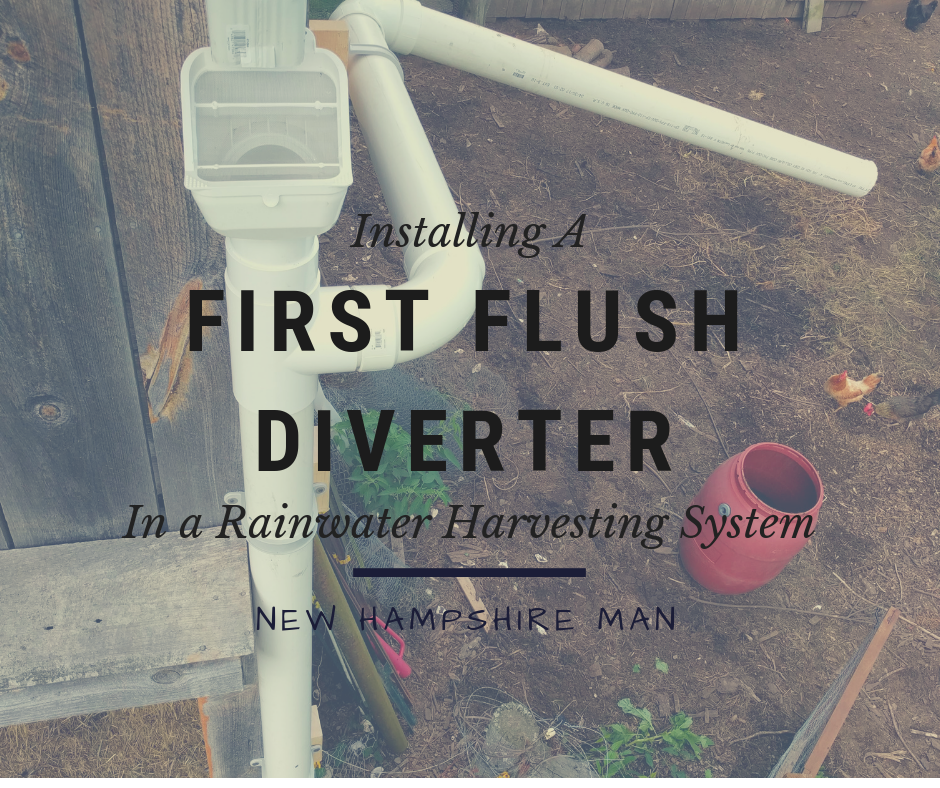Personal freedom is living your life the way you desire.
Lifestyle design is purposefully and deliberately designing your life to accomplish the ability to live your life the way you desire.
Upon reflection of my own life I have come to own the reality that it makes me happy to build things. Whether it’s woodworking, metal working, plumbing or computers; I’m a builder.
I tell you that because I don’t want to confuse the point of this website. My goal is to inspire you to take control of your life. It doesn’t matter to me whether you want to harvest rainwater. What matters most to me is encouraging you to be proactive and honest with yourself to pursue the things that ACTUALLY make you happy.
The concept of harvesting rainwater to automate watering my gardens seems really cool to me, so I’m doing it. I’m sharing it with you because you might find it interesting too, but really because I want to lead by example to show you that, in spite of how busy life is, I’m making the time to learn about things that interest me and to take action on the things that bring me joy.
I hope that message comes through loud and clear.

The Rainwater Harvesting Project
In case this is the first article you’re seeing on this rainwater harvesting project, the whole thing is being documented on this page, to include the first post on the installation of the project, which was installing cheap gutters.
For some projects, including this one, I record some video to post on my YouTube Channel. You can find the video for this phase of the rainwater harvesting project here:
Also, before we get into it, I want to reiterate, or emphasize, that this is part of a much bigger project I titled the Applied Permaculture Project and is funded in large part by my knife sharpening side hustle I call The American Edge.
Again, as you commit to pursuing your own version of personal freedom, go forth knowing that it will take a lot of work, but that it will likely be the work that brings you the most joy and pride.
What is a First Flush Diverter
The gutters catch the rain that falls onto and flows down the roof. The gutters are angled so that gravity directs all the water to one side. A downspout is located on the low side of the gutters that direct water into the First Flush Diverter.
The purpose of the first flush diverter is to keep debris from entering the rainwater storage tank. It does this in two ways:
- The downspout filter is a mesh screen at the top of the diverter. The mesh screen keeps large debris from entering the diverter and is angled such that when leaves and twigs are caught on the screen the flow of the water forces that debris off the screen. A self-cleaning mechanism.
- The second filter is a column of pipe. The first several gallons of water go toward filling the pipe before the water is directed to the tank. This catches all the pollen, dust, and bird shit on the roof that the first few minutes of rain wash off.
- For reference, 10 feet of 4” diameter PVC pipe holds 6.7 gallons.
How a First Flush Diverter Works
Inside the vertical pipe is a little ball, and at the top of the pipe is a fitting that is slightly smaller than the ball. As the water fills up the pipe the ball floats up with the water. When the ball reaches the top it plugs the pipe at a T-fitting so that the water then gets directed out the other side of the fitting.
At the bottom of the vertical pipe is another fitting that slowly drains the water so that the pipe will empty between rain events.
The simplicity and functionality are beautiful.
Installing a First Flush Diverter
After looking at the video or pictures the installation will reveal itself. It’s relatively straight forward. A few key points from the way I did the job:
- None of the PVC fittings are cemented together – I seem to be fearful of permanence.
- The bottom of the downspout is fastened to the wall of the barn through the leaf eater filter.
- It was a bit of a dance to support the weight of the pipe and get everything installed correctly.
- Note, as well, that the weight of the pipe will be substantially more when it is full of water.
Sourcing Parts for a First Flush Diverter
Here is the updated list of where I purchased components for this system:
- Lowe’s: Downspout, gutter parts, PVC pipe and fittings
- Rain Harvesting Supplies:
- Leaf Eater Downspout Filter – Note: be sure to select the correct size for the size pipe you choose.
- McMaster Carr: Pipe Clamps for 4″ PVC Pipe
It’s like eating an elephant
You’ve heard the joke, right? How do you eat an elephant?
One bite at a time.
Well that’s how a project like this happens, and that’s how you implement designs into your life to live the way YOU want to live.
The next step will be building a timber frame support for the tank. I’m going to do it old school style, mortise and tenon joinery, no nails or screws. Make sure you subscribe, because I think it’s going to be sweet.
Let me know if you have any questions.
NHMan
[sibwp_form id=2]


